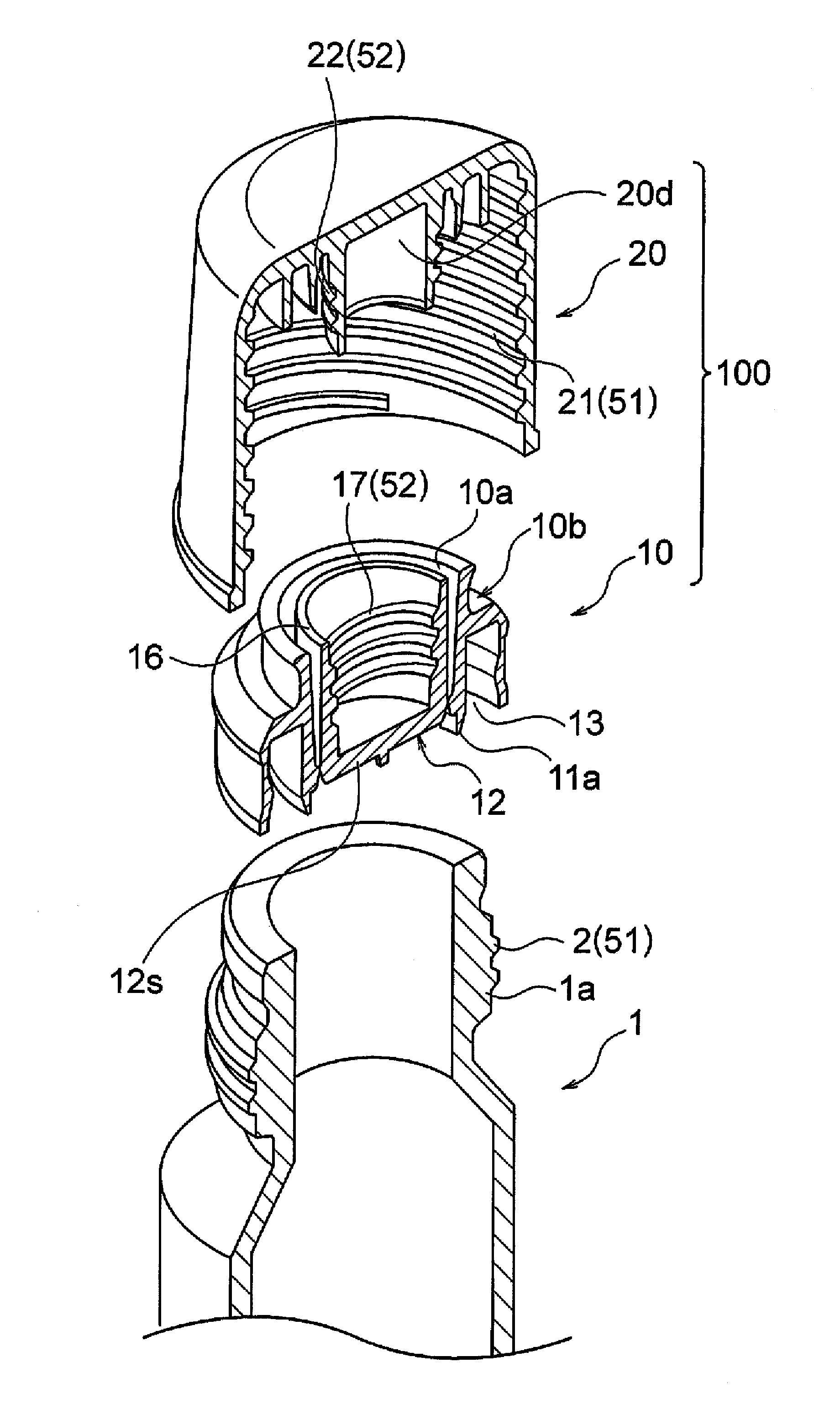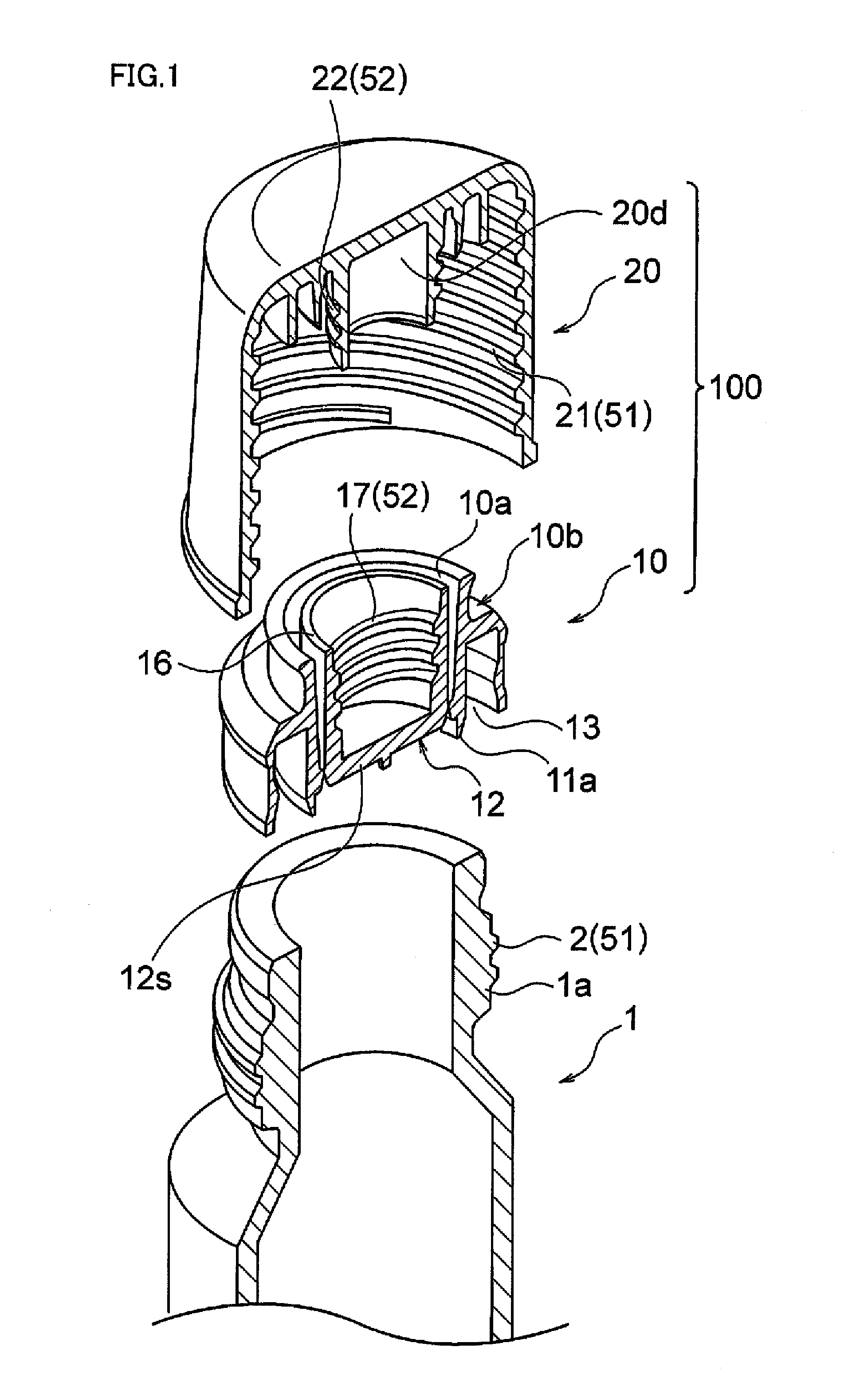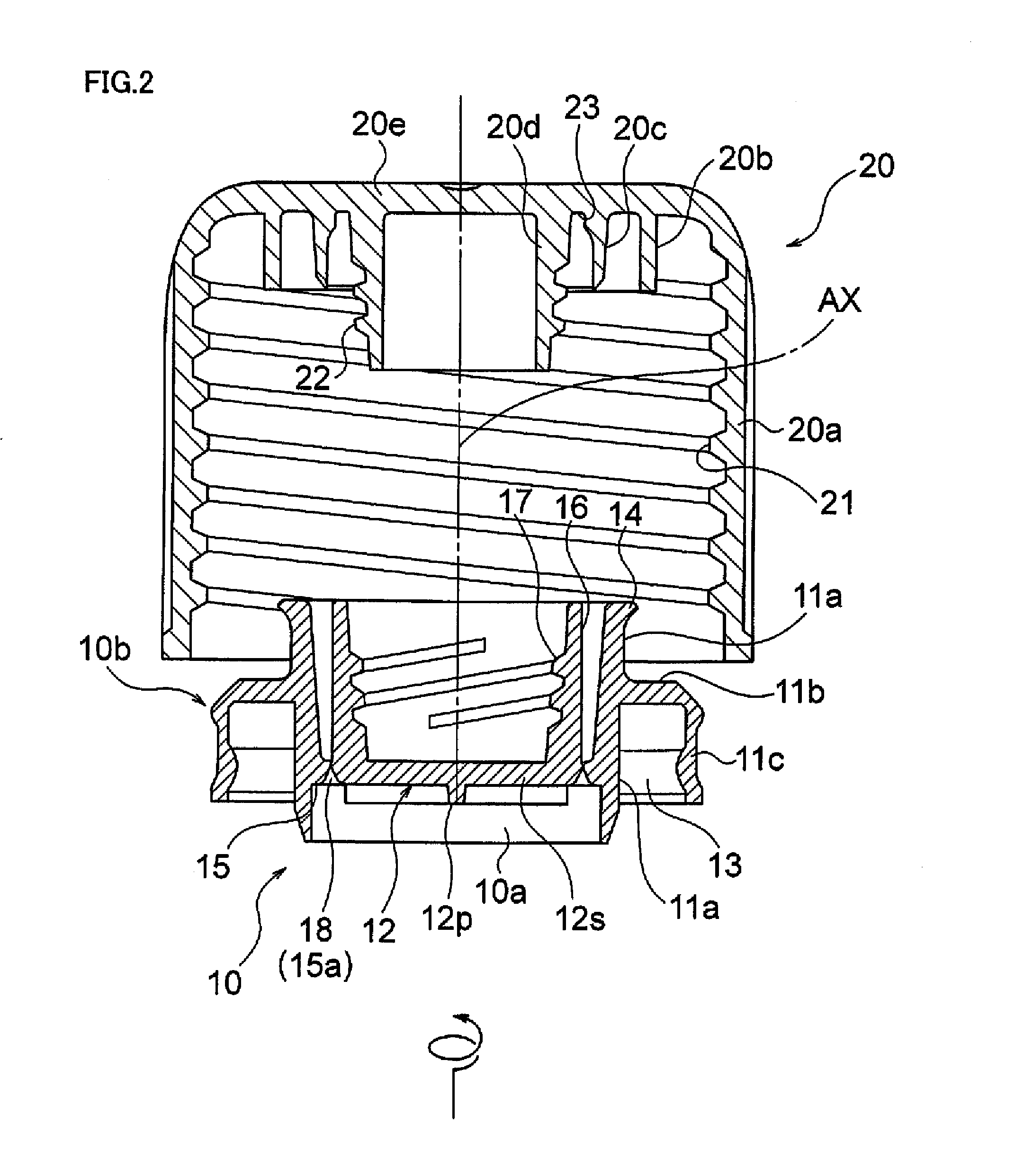Container sealing device
- Summary
- Abstract
- Description
- Claims
- Application Information
AI Technical Summary
Benefits of technology
Problems solved by technology
Method used
Image
Examples
Embodiment Construction
[0024]FIGS. 1 to 5 illustrate an embodiment of a container sealing device according to the present invention.
[0025]An illustrated sealing device 100 is constituted of an inner plug 10 locked by a mouth part 1a of a container 1 through fitting or the like, and an upper closure 20 screwed with the mouth part 1a of the container 1 so as to cover an extraction port 10a of the inner plug 10.
[0026]The inner plug 10 is an integrally molded produce made of a resin and is provided with a body part 10b locked by or fixed to the container 1 and a separation part 12.
[0027]As illustrated in FIG. 2 and the like, the body part 10b of the inner plug 10 forms the extraction port 10a of a content of the container 1 and has a cylindrical base part 11a which is a cylindrical member extending along an axial center AX, a flange part 11b extending outward in a radial direction from an outer peripheral surface of an intermediate part of the cylindrical base part 11a, and an annular wall part 11c which is a...
PUM
 Login to View More
Login to View More Abstract
Description
Claims
Application Information
 Login to View More
Login to View More - R&D
- Intellectual Property
- Life Sciences
- Materials
- Tech Scout
- Unparalleled Data Quality
- Higher Quality Content
- 60% Fewer Hallucinations
Browse by: Latest US Patents, China's latest patents, Technical Efficacy Thesaurus, Application Domain, Technology Topic, Popular Technical Reports.
© 2025 PatSnap. All rights reserved.Legal|Privacy policy|Modern Slavery Act Transparency Statement|Sitemap|About US| Contact US: help@patsnap.com



